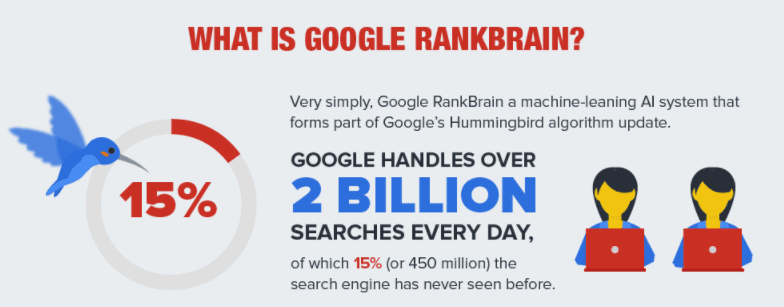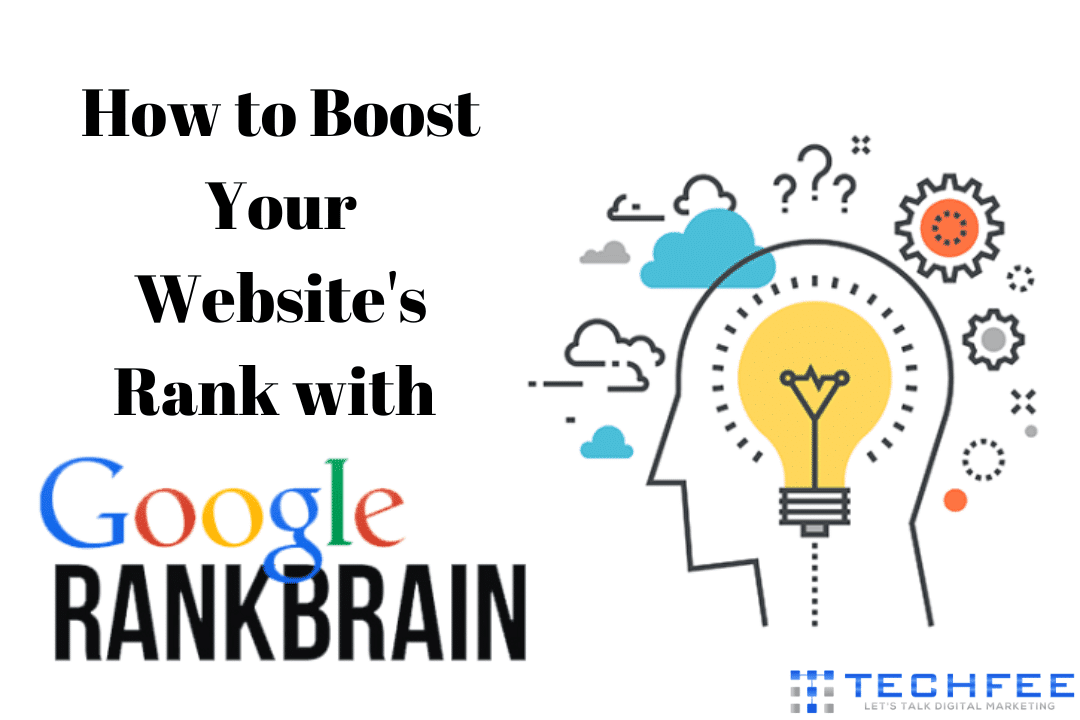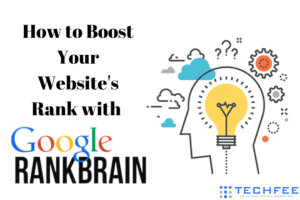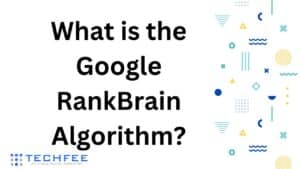SEO has become more essential than ever in the modern digital marketing world. If you want to see your website on the first page of search engine results, understanding how to Boost Your Website’s Rank with the Google RankBrain algorithm is essential.
This robust AI-based algorithm was the third fastest-growing factor used by Google in 2018 and continues to be one of the most influential technologies driving search engine optimization (SEO) today.
Understanding how this algorithm works and what techniques are used can help increase traffic on your website and boost its rank on search engine results pages.
In this blog post, we will explore how RankBrain works and discuss tactics that digital marketers, bloggers, freelancers, and online marketers can use to take advantage of its power to increase their websites’ ranks in SERPs. So let’s dive right in and start exploring!
Table of Contents
ToggleWhat is Google RankBrain?

Google RankBrain is a machine-learning system used by Google to help process its search results. It helps Google better understand user queries to rank websites more accurately and create more relevant search results.
RankBrain uses complex algorithms and artificial intelligence to automatically identify query patterns and the relevance of different web pages.
The way it works is quite simple; when a query comes in, it’s compared to previous questions, and if there is no match, then RankBrain will help fill in the gaps using the past experiences associated with similar words or phrases.
This helps Google provide more accurate and relevant search results. What’s even more impressive is that this all happens without any direct human intervention and can learn from its own mistakes.
Moreover, because it focuses on user engagement metrics, it can reward sites with interesting and valuable content rather than relying on keyword-stuffing techniques.
Ultimately, RankBrain helps ensure that Google remains the go-to place for finding relevant and valuable information on the web.
• Why Did Google Introduce RankBrain?
Google introduced RankBrain in 2015 as an artificial intelligence tool for determining search results. It is the first of its kind, using a robust machine learning algorithm that not only determines the relevance of a web page to a particular inquiry but also can understand ambiguous and conversational queries.
This innovative technology allows Google to process searches more quickly and provide the most beneficial results to searchers, regardless of how much they know about a topic or specific search terms.
In short, by introducing RankBrain, Google has made searching more intuitive and efficient, making it easier to find exactly what people are looking for.
• Significant Updates to Google RankBrain
Google delivered far more contextually relevant search results when RankBrain was introduced. This required websites to up their game, creating meaningful and helpful content for viewers; in return, SEO practices began shifting accordingly.
Even further improvements have followed since then with the introduction of Bidirectional Encoder Representations from Transformer (BERT). BERT has enabled greater comprehension of natural language queries while rewarding webpages containing well-crafted information attuned to readers’ needs.
• Role of Machine Learning in RankBrain
The role of machine learning in RankBrain is quite significant. As an algorithm Google uses, RankBrain is a huge part of search engine results. Therefore, to better understand how it functions, it’s essential to see the role that machine learning plays in its various applications.
By employing machine learning algorithms like Natural Language Processing, RankBrain can analyze searcher intent and attempt to infer what people are looking for when they query. Combined with traditional keyword optimization, this creates highly accurate results for users on their searches and provides more relevant content for them to find.
Machine learning has also opened the door for much faster indexing, ensuring fresh content is quickly found and included in search engine rankings.
These features rely heavily on machine learning technology and make up a big part of why RankBrain remains one of today’s top-ranking algorithms.
• How RankBrain Affects Search Results
RankBrain is an artificial intelligence system used by Google to rank search results and understand user queries. How it affects search results is controlled mainly by algorithms.
Still, the actual data and relevance of search results that RankBrain provides are based on machine learning from past searches, user interactions such as clicks on particular sites, and the context of how people search for a term.
Considering so many factors and given that the technology is constantly evolving, it has allowed for more relevant search engine results that have benefited both users and businesses.
For example, if someone searches for something specific or related terms, they are more likely to find precisely what they need much faster than before.
Businesses are also reaping the benefits of this technology since their websites may become ranked higher in search engine rankings.
RankBrain has undoubtedly changed how Google analyzes user searches and provides relevant information faster than ever before.
Why is Google RankBrain Important for SEO?
Google RankBrain is an AI machine learning tool that processes search queries and delivers better user results. By collecting data from billions of searches, Google can analyze the intent and context of questions more efficiently than ever before.
SEO strategies must be customized to target RankBrain’s preferences to stay ahead of search engine algorithms. As RankBrain continues to learn and evolve, it will help Google place a higher priority on pages with quality content, accurate meta descriptions, and keyword-optimized URL structures versus those that are solely focused on getting lots of backlinks or keyword stuffing.
In other words, Google RankBrain is a significant player in SEO that needs to be considered when creating a comprehensive SEO strategy.
Furthermore, RankBrain continually improves its ability to deliver better and more accomplished results by teaching itself what users want based on their data-driven insights. For marketers eager to ensure their content appears prominently at the top of Google SERPs, understanding how RankBrain works should be a priority.
How Does Google RankBrain Work?
Google Rankbrain is a cutting-edge technology developed by the search engine giant to help it better understand natural language processing. Through patent-pending artificial intelligence algorithms, Rankbrain helps Google interpret customer inquiries and deliver more accurate results.
By analyzing user behaviors, feedback, and data collected from past searches, Rankbrain can genuinely comprehend the root of what is being asked and provide a match in its most relevant database of web pages.
This way, customers get the best possible answer faster – delivering an improved experience to those seeking answers on search engines like Google.
Benefits of Optimizing Your Website for RankBrain
Optimizing your website for RankBrain is a great way to improve your search engine rankings. RankBrain is an artificial intelligence system that Google uses to understand better user needs and how pages rank.
Optimizing this algorithm’s benefits include:
- Increased visibility.
- More qualified and targeted traffic.
- Higher click-through rates.
- Improved page speed.
- More conversions.
- More significant ROI.
Increasing your website’s quality signal will make users notice it quicker, leading to higher visibility in the search engine results pages. Utilizing keywords in relevant places on the website also helps RankBrain better understand the user experience and context within which your pages are being used.
These factors result in a higher quality score on a search engine results page which can ultimately increase traffic to a site and its associated pages. In conclusion, there are many benefits to optimizing your website for RankBrain, including enhanced visibility, more targeted traffic, increased conversions, and improved ROI.
How to Boost Your Website's Rank with Google RankBrain
Although RankBrain cannot be directly optimized, you can still reward it with improved content for better rankings. The way forward is to provide quality information that accurately answers user queries and matches their search intent. So make sure your website pages have what they need!
Here are a few tips on how to do this:

1. Use Natural Language
Creating content that reads like a conversation is not only helpful for readers, but it’s also vital in pleasing RankBrain. Make sure to read your pieces out loud after you write them — this will ensure they flow naturally and sound human-like! Doing so can make all the difference between an engaging article and one that falls flat.
2. Focus on Search Intent
Creating content that reads like a conversation is not only helpful for readers, but it’s also vital in pleasing RankBrain.
Make sure to read your pieces out loud after you write them — this will ensure they flow naturally and sound human-like! Doing so can make all the difference between an engaging article and one that falls flat.
3. Create Content That Helps Searchers Find What They are Looking for
Creating content that truly resonates with your audience is a must to capture their attention.
In addition, Google recognizes and rewards you when giving practical solutions, so it’s essential for readers to feel like they can easily accomplish what’s outlined in the article; hence why if someone was searching “how to build an online course?” providing tips on how this could be achieved rather than discussing its importance will have much more impact.
Ensure readers finish reading feeling motivated about tackling whatever topic has been presented.
Content is king when it comes to Google rankings. However, just because you write a 10,000-word blog doesn’t guarantee success!
Quality over quantity applies here; if your content fails to provide helpful answers and valuable solutions for readers’ queries, the search engine won’t recognize it as valuable material worth ranking on top of results pages.
4. Use Keywords People are Searching for
RankBrain is on the lookout for content that wins with quality and relevance. So if you want your page to rank, use keywords intelligently. Start by identifying keyword phrases with a medium-to-high search volume, then optimize around them – just one phrase at a time.
Also, remember other related terms; they help Google understand what you are talking about to serve relevant results to searchers.
This together means better ranking potential when paired with valuable content – cheers to high rankings!
5. Use LSI Keywords
SEO is an ever-evolving process, and LSI keywords are a great way to make your content stand out in search engine optimization. To use them effectively, choose a keyword such as “best online course software.” Then look for conceptually related terms like “school” or “masterclass” that could be included throughout the written material.
This will help Google recognize how relevant your content is. But, of course, these aren’t our only tips for ranking well on SERPs – there’s still more you can learn about advanced techniques.
So take some time to research additional ways to improve your article’s visibility with quality SEO practices – it’ll pay off big time!
6. Use Numbers And Make Your Headings "Clickable."
Your titles are the make-or-break factor when it comes to rankings!
Organic click-through rates play a significant role in how RankBrain ranks your site.
That’s why adding numbers into headlines can be beneficial for gaining reader attention and clicks on pages. People feel more intrigued by them than standard phrases without any numerical element involved.
However, an attractive title with no helpful content won’t help you either; thus, emphasizing both aspects is vital if you want success from SEO efforts quickly.
7. Give Your Article a "Clickable" Meta Description.
Create a meta description so compelling that it attracts readers in an instant.
Use emotional words, give your audience something to look forward to, and ensure you include the target keyword for optimal search engine visibility – these tips are for crafting click-worthy descriptions!
8. Shorten Your intro and Dive Deeper into your Blog Post Topics.
You’ve just been introduced to someone new, and before you can even say hello, they start talking nonstop about only themselves. You know the feeling of being talked at rather than with – it’s a major turnoff! That same experience awaits readers when blog posts take too long to introduce their topic.
A short intro is essential for keeping your reader engaged, so don’t drag out introductions any longer than necessary; instead, focus on answering as many questions related to the subject matter within your content as possible, making sure its super relevant to what brought them here in the first place.
9. Strengthen Relevance
If you want to maximize your SEO potential and rank for multiple keywords, it’s essential to think of each page more as a topic than just one keyword. Then, create comprehensive posts that cover all possible variations related to this topic – it will make the post more authoritative in search engine results pages (SERPs) and help increase visibility.
Create comprehensive content to boost keyword rankings. For example, if your main topic is puppies, remember all the variations related to potty training- such as how long it takes, what age they can start training and the easiest way to teach them. All these elements of relevance will help with RankBrain!
10. Improve Click-through Rate (CTR)
To get the best results from RankBrain, creating captivating title tags and meta descriptions is essential. In addition, employing emotions in your titles can be a great way to increase clicks.
You could also look for intriguing numerical figures or symbols, such as brackets and parentheses, that will draw attention to your content compared with other search rankings.
It might help to analyze what paid similar niches employ ads and how well they perform within top-ranking pages!
11. Quality Over Quantity
A shift should be expected for seasoned SEO professionals when looking at content and keyword strategy. In the past, separate posts for individual keywords were necessary to maximize optimization – but that’s no longer the case with RankBrain!
Instead of wasting time constructing multiple blog posts focusing on various phrases like “get more sales,” “increase your sales,” or even “grow monthly revenue,”; now it is possible to craft one post overflowing with relevant information surrounding just one term — resulting in higher rankings from Rank Brain.
12. Time On Page (Dwell Time)
RankBrain looks at user experience signals to determine which search results are engaging and beneficial. This includes how long they stay on a page if they bounce back quickly or keep searching around – valuable clues as to the quality of content found by their query.
To ensure better UX signals for your website optimization efforts, break up paragraphs into small digestible chunks with headings marking each section; make sure you’re getting users interested right away with an eye-catching introduction sentence followed by relevant visuals such as images & videos plus questions answered swiftly in the body text so readers can gain all information from just one source!
13. Improve Old Content
If your website has been around a while, you may have content that was optimized before RankBrain. Consider merging the posts with higher traffic and rankings into one position for better ranking results!
This will allow you to improve SEO quickly; do a 301 redirect from old pages to the new page once completed. Optimizing this way can bring excellent search engine visibility – it’s worth considering if some of your older posts are topically relevant!
Conclusion
In conclusion, staying abreast with Google RankBrain can be a challenge. However, it’s now essential for SEO experts to stay informed and updated regarding new developments in Google’s algorithm and its particular use of machine learning.
All sign points to understanding how Google RankBrain works and leveraging it as part of your SEO strategy is becoming more critical than ever if you want your website to rank in top positions for SERPs.
To excel in SEO, mastering the art of optimizing your website according to Google RankBrain algorithms should become one of your top priorities. However, always remember that SEO doesn’t stand still, and neither does Google!
This blog post concludes this guide on how to boost your website’s rank with Google RankBrain: Tips and Tricks. I hope it was helpful and now I would love to hear from you. What do you think about using RankBrain to maximize website visibility? What do you want to grab from this blog post? Do let me know in the comment! Until next time – Enjoy & Be Safe!
Frequently Asked Questions
So RankBrain is the new way Google ranks search results?
Yes, indeed. The machine-learning artificial intelligence system known as RankBrain has become integral to how Google sorts its search results to deliver content most relevant to the user. It takes the keywords you input and processes them in real-time, drawing out different meanings within them and discerning those searched more often, thus delivering better results than simple keyword matching.
So, if you're looking for something quickly and conveniently, you can be sure that RankBrain will give you up-to-date, accurate results that will likely match your query!
What's the name of Google's search algorithm?
Google is one of the most popular search engines available today, and its success comes from its reliable and sophisticated search algorithm. So what's the name of Google's search algorithm? It's called PageRank. This patented algorithm evaluates the weight of a web page based on the quality and quantity of its inbound links and their popularity with users.
This algorithm has allowed Google to deliver quick and accurate results to its users, making it one of the most widely used search engines globally.
When Did RankBrain start?
Launched by Google in April 2015, RankBrain is a machine learning algorithm specifically developed to improve search engine results. It uses sophisticated AI technology to understand user queries and constantly learns from experiences to improve performance. Quickly and accurately classifying webpages based on user queries enables Google to deliver personalized and more accurate results.
When it was first released, RankBrain had already become the third most crucial ranking signal behind content relevance and link signals, demonstrating its critical role in the modern search engine algorithm.
Does RankBrain do more than query refinement?
This AI-driven technology is capable of a range of capabilities. It can look at historical data and draw insight from it, discover relevant search results that have not been seen before, and influence the order in which users view results. It uses machine learning to understand various natural language queries from users, generate innovative queries, and amend them according to their needs.
Furthermore, RankBrain analyzes user behavior to obtain information about what types of websites or content are popular among users and prioritize these in SERPs (Search Engine Results Pages). Therefore, it is clear that RankBrain offers much more than just query refinement services.
How RankBrain differs from neural matching?
RankBrain is Google's machine-learning technology for interpreting queries and understanding user intent. Unlike neural matching, which analyzes a query search by extracting keywords, RankBrain examines the actual structure of a question to gain insight into its meaning.
This helps the algorithm better understand the query's context and intent and effectively produce results that meet or exceed the user's expectations.
In addition, the ability of RankBrain to interpret more complex queries provides more useful, accurate information in response - contributing to better results than traditional search engine algorithms.
Is RankBrain a ranking signal?
To answer this, we need to understand what RankBrain is. RankBrain is an AI technology used by Google to process web searches better and provide users with more relevant search results. It uses machine learning algorithms and natural language processing to interpret queries that are too complex for traditional processing methods.
Is it used as a ranking signal? The short answer is yes; RankBrain has indeed been confirmed by Google as part of their core algorithm and is thus being used as a ranking signal. It ultimately helps Google understand user intent regarding web searches so that relevant information can be provided in response to complex queries.
What are machine learning and artificial intelligence?
Machine Learning and Artificial Intelligence are two related but different technologies. Machine Learning focuses more on finding patterns in large data sets and using them for predictions or classifications. This allows problems to be solved without the need for explicit programming instructions.
Artificial Intelligence (AI) takes it further by enabling machines to think like humans and solve complex problems independently. AI is mainly responsible for innovations such as virtual assistants, driverless cars, and facial recognition. Both technologies have become increasingly prevalent in today's society and will continue to grow and impact our lives in the future.
What is a good dwell time for my website?
Knowing a good dwell time for your website is essential to keeping visitors engaged. Dwell time is the time users spend actively interacting with the website, often measured from the moment they arrive until the moment they leave. A good dwell time depends on several factors, such as content type and complexity, but having a higher website dwell time is preferable to a lower one.
The ideal dwell time will vary depending on your business or industry, so carefully consider what would create a positive user experience for your website visitors when determining what makes for a good stay.
How can I improve my website's dwell time?
Improving your website's dwell time, or the amount of time visitors spend engaging with your site, helps encourage user engagement and drive traffic back to your site. A few simple strategies that can help include optimizing for readability and crafting exciting and compelling content for your readers.
To keep visitors on the page longer, create an engaging design for easy navigation around the website, add more visuals like videos and infographics, personalize content to fit users' preferences and interests, and offer a variety of interactive activities like quizzes and contests.
Lastly, make sure to use Analytics tools coupled with audience segmentation techniques so you can detect quickly when people are beginning to leave off a page too soon. Following these tips can go a long way in improving website dwell time.
How often does Google RankBrain update?
While various sources may suggest multiple answers to this question, the reality is that it's hard to know for sure. Google RankBrain updates automatically and continuously, meaning there is no set interval for when updates occur.
Instead, the technology reacts to search queries in real time, meaning results are constantly updated based on users' needs and questions.
During knowledge about exactly how often RankBrain updates may be limited, it is clear that Google has heavily invested in artificial intelligence technology, which means its algorithms are always up to date.
How do I set up Google RankBrain?
Setting up Google RankBrain is an excellent way for your business to increase visibility in search engine rankings. Utilizing this feature is relatively easy and requires only basic coding knowledge.
To begin, you'll need to install a script on each page of your website that allows Google's algorithms to understand the content and meaning of your website. Once installed, you can use Meta tags to define the purpose of each page's purpose and optimize titles, descriptions, and headings. Ranking higher in Google searches will become easier with each tweak used.
Remember that tracking results may take some time before any noticeable change appears; however, consistently determining which changes yield better results will keep your ranking growing exponentially.
How to rank AI content on google search?
A few simple tips can make ranking AI-generated content on Google Search easier. First and foremost, ensuring your content is relevant to the topic will help your search rankings. This includes optimizing keywords within the text pertinent to the subject and popular search terms. Furthermore, having backlinks from quality outside sources can significantly increase the legitimacy of your content, leading to higher rankings in search results.
Finally, regularly engaging with viewers and readers of your content, such as through responding to comments or questions in a playful manner, helps establish authority and trust with Google AI algorithms. All these tips combined are essential for ranking AI-generated content more prominently on Google Search results pages.
Who can I contact if I have more questions about Google RankBrain?
If you have any unanswered questions about Google RankBrain, the best way to get answers from a knowledgeable source is to contact Google directly. You can contact them via their online support service, discuss it with your fellow marketers on forums and message boards, or ask for feedback in professional groups.
Alternatively, suppose you want an instant response from experts on the topic. In that case, consider contacting an SEO agency - they can provide up-to-date advice on the latest ranking changes made by Google's RankBrain algorithm.



 Twitter
Twitter Facebook
Facebook Linkedin
Linkedin





